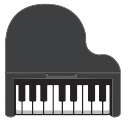Percussion instruments
Percussion instruments – the most numerous to date family of musical instruments. Sound from instruments of this type is extracted by hitting the surface of the sounding body. The sounding body can take various forms and be made from a variety of materials. In addition, shaking is permitted in place of the shock – in fact, mediated strikes by chopsticks, hammers or beatings on the same sounding body.
Percussion instruments are one of the oldest. The first prototype of a percussion instrument appeared when primitive people, striking a stone against a stone, created a kind of rhythm for ritual dances or simply in everyday household concerns (crushing nuts, grinding grain, etc.).
In fact, any device that produces measured noises can be called a percussion instrument. In the beginning, these were stones or sticks, planks. Later there was an idea to tap a rhythm on the skin stretched on the hollow body – the first drums.

During excavations of places of settlement of tribes of Central Africa and the Far East archeologists have found already more similar to the modern samples of ancient percussion instruments. Obviously, it was they who once served as an example for the creation of European percussion instruments.
Functional features of percussion instruments
The sound produced by percussion instruments originated from primitive rhythmic melodies. Ringing prototypes of modern percussion musical instruments were used during ritual dances by the peoples of Ancient Greece and Ancient Rome, the countries of Asia.
But representatives of ancient Arab states used percussion instruments, in particular drums, in military campaigns. This tradition was adopted by European nations much later. Ill-bred in a melodic plan, but loud and rhythmic, the drums became an unchanged accompaniment of military marches and hymns.
And in the orchestra, percussion instruments have found wide application. At first, they were denied access to European academic music. Gradually, the drums found their application in dramatic music within the opera and ballet orchestras, and only then they got into symphony orchestras. But today it is difficult to imagine an orchestra without drums, timpani, plates, tambourine, tambourine or triangle.
Classification of percussion instruments
A group of percussion instruments is not only numerous, but also very unstable. Several different ways of classifying them have been developed, so one and the same tool can refer directly to several subgroups.
The most common percussion instruments today are timpani, vibraphone, xylophone; various kinds of drums, tambourines, an African drum there and there, as well as a triangle, plates, castanets and many others.
